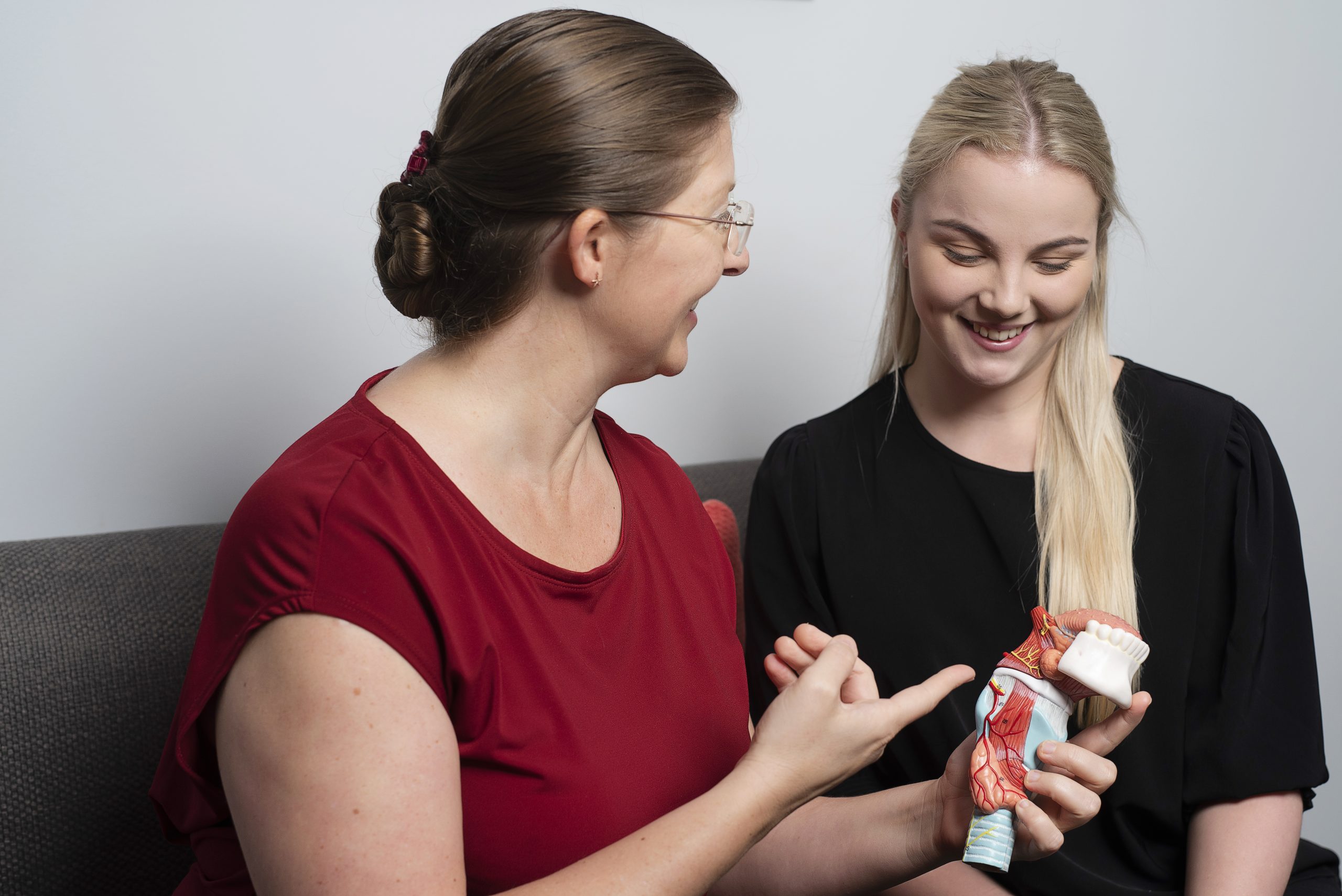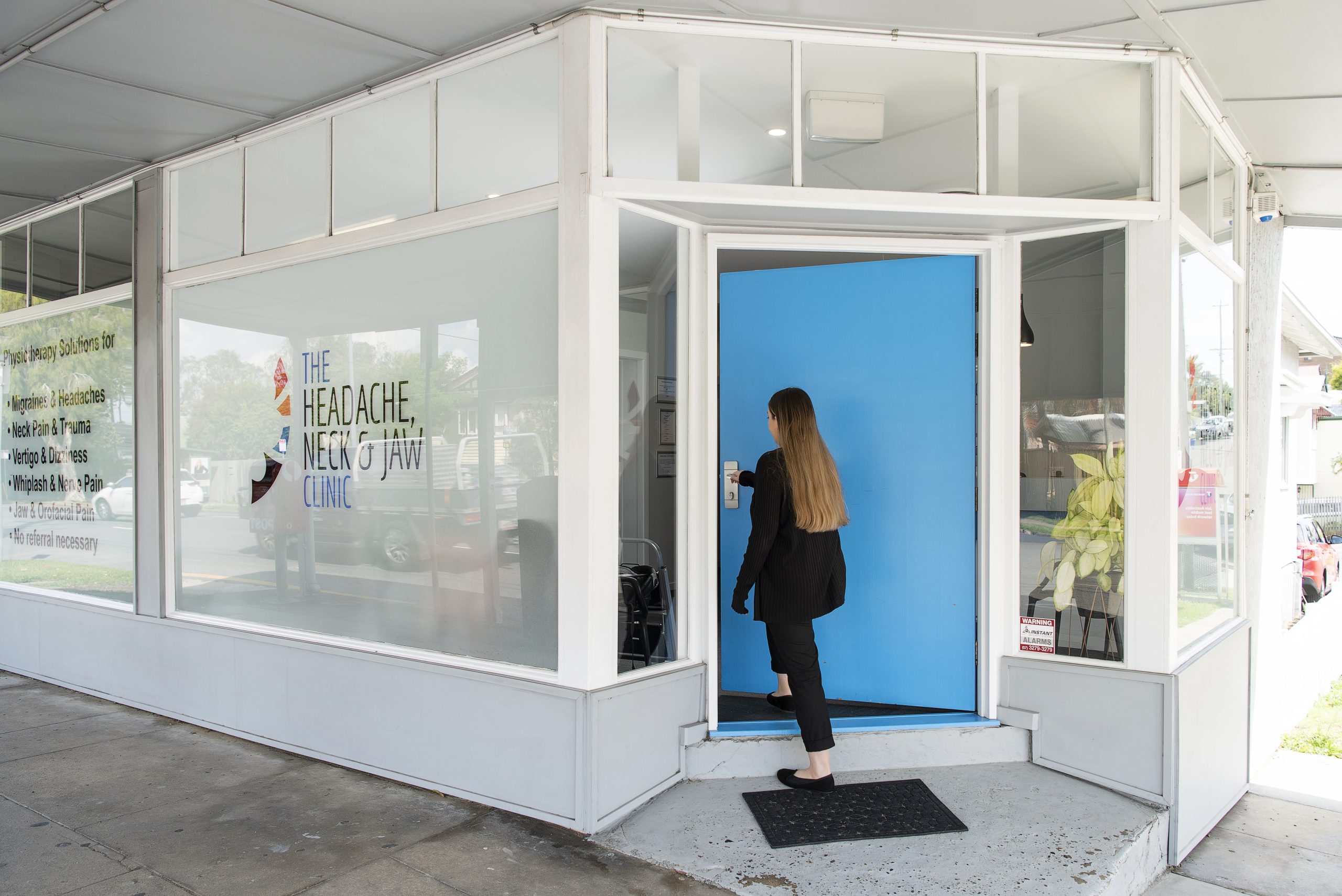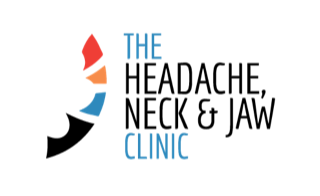Singing / Vocal Therapy

Referring a Patient? - Click Here
Singing
Has singing become a painful chore rather than fun and rewarding? Have you noticed a deterioration in your voice quality despite working on your singing technique? Do you hold tension in your tongue, neck or jaw muscles?
Singing should be an enjoyable, relaxed production of sound. Unfortunately, some singers battle with tension, fatigue, pain or poor voice quality no matter how diligently they work on technique or try to relax. It can be frustrating if all your effort in rehearsals does not result in glorious sounds and instead leaves you tired, tense, aching, or discouraged.
Did you know there can be dysfunction in your neck and jaw that won’t allow you to relax or correct your singing posture? Muscles in your neck, shoulders or jaw might be gripping for dear life because they are the only thing keeping your head up and functional at the end of a long day of rehearsals or performance.
How the HNJ Clinic Can Help
At the Headache, Neck & Jaw Clinic, we are physiotherapists who regularly work with singers, staff and students from the Queensland Conservatorium to improve singing quality from a musculoskeletal perspective. There are a multitude of factors that can negatively impact the singing voice.
We love working with singers because of their dedication to fine-tuning their body as a high quality musical instrument. We are happy to provide temporary relief with soft tissue releases and self management exercises for immediate performance demands but we prefer to address the causes for long term solutions rather than provide a temporary fix.
Anatomy of Singing
Your voice is created from air flowing between your vocal chords inside your larynx which sits in front of your neck under your adam’s apple. The only physical support for the vocal chords is the cartilage of the larynx and a small semicircular bone called the hyoid. The hyoid bone does not attach to any other bone but instead “floats” in a hammock of soft tissue that can pull the hyoid and larynx in different directions. Downward pull comes from muscle and connective tissue attached to the collarbones and ribs. The upward pull comes from the muscles at the base of your skull, jawbone (mandible) and root of your tongue.
Many singers unknowingly overuse the outer neck and jaw muscles that lift and lower the larynx in an inefficient attempt to change the tension of the vocal chords. Sound production thus can be effected by the hyoid and larynx position indirectly tightening the internal laryngeal muscles and ligaments. A lower position of the larynx loosens the pull on internal ligaments and muscles around the vocal chords encouraging singing in a lower register while a high position of the larynx increases the pull and mimics high register singing.
When you add long hours of rehearsing and performing, you can understand why our bodies recruit every possible muscle to help maintain the voice but this leads to overuse tension and injury.
Headache, Neck & Jaw Conditions We Treat
Our Brisbane clinics specialise in the treatment of head, neck and jaw conditions, many of which are notoriously difficult to treat. If you’re experiencing symptoms of any of the following problems, our team has the expertise and training to help.
Headaches
Migraines
Jaw and Orofacial Pain
Neck Pain and Trauma
Whiplash and Nerve Pain
Vertigo & Dizziness
Tinnitus
Singing / Vocal
Therapy
Book an Appointment
If you’re experiencing pain or discomfort then don’t put it off - contact our friendly team today to make an appointment with one of our expert physiotherapists.
Checklist for singers
Vocal signs to watch out for include voice change in:
In addition to poor voice production, signs that may indicate structural dysfunction of the neck and/or jaw include:
Conditions We Can Treat
Treatment Plan
Generally we find singers with signs of head, neck or jaw dysfunction benefit from a 1 hr initial consult for a full assessment and creation of an individually tailored treatment program. Follow up appointments are for 30mins and include manual therapy designed to reduce any mechanical strain on the larynx and a carefully monitored implementation and progression of tongue, jaw and/or neck exercises. These are similar to Pilates based exercises to enable the tongue, jaw and neck muscles to quietly work efficiently in the background allowing the singer to focus on performance and singing technique.
Progress and time frames vary but typically change to the soft tissue sling that the larynx rests in takes 6 weeks to stabilise while building up endurance of improved muscle coordination around the larynx can take 3-4 months. Sometimes it is a good idea to consider what performances and training intensity you have ahead of you when looking at retraining efficient musculoskeletal support while singing.
Our experience and qualifications
We are frequently invited to lecture, especially at the following:
Book Your Appointment Now!
Get in touch with us today for more information on our services or to make an appointment with our friendly team.

